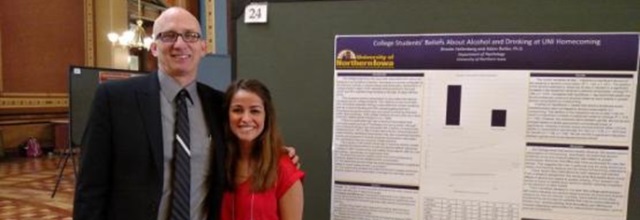Honors Program Theses
Award/Availability
Open Access Honors Program Thesis
First Advisor
Darrell Wiens
Abstract
Following neurulation in the chick embryo, the pleuripotent neural crest cells (NCC) migrate from the dorsal neural tube to form a variety of tissues, including the dorsal root ganglia, craniofacial cartilage, melanocytes, and the adrenal medullae. Type II cadherins, calcium-dependent mesenchymal cell adhesion molecules, are expressed in NCCs prior to and during migration, including a period of epithelial-to-mesenchymal transition (EMT). Among teratogenic substances known to cause congenital malformations, including heart and neural tube defects, which involve NCCs, homocysteine (Heys) is a natural blood amino acid known to disrupt EMT. The purpose of this thesis was to study the effect of elevated levels of Heys on the expression of type II cadherins 6B, 7, and 11, in migrating NCCs. Neural tubes were excised from H.H. stages 9+ through 11 chick embryos and divided into four regions: cranial, cardiac, trunk, and tail. Each set of four explants was cultured in medium containing 100 µMD, Lhomocysteine thiolactone or medium only. After fixing and immunostaining using antibodies to cadherins, migrated NCCs were randomized into a sample population and given a positive or negative classification for cadherin expression. The research analysis demonstrated an effect of Heys on four regions of NCCs in cad 6B, 7, and 11. The mean proportion of cad-6B positive cells exposed to Heys was significantly higher than in the controls for the cardiac, trunk, and tail regions. We also observed significantly different expression in the cranial and trunk regions for cad-7. All four regions, with the exception of trunk, demonstrated significant augmentation for Heys-treated cells over controls for cad-11 expression. Based on this research, Heys can be associated with an overall increase in the expression of cadherins 6B, 7, and 11, upsetting the natural regulation of these adhesion molecules that leads to normal development. The difference observed regionally is an interesting finding because it suggests that Heys' teratogenic tendencies affect some structures, but not others, formed by NCCs.
Year of Submission
2009
Department
Department of Biology
University Honors Designation
A thesis submitted in partial fulfillment of the requirements for the designation University Honors
Date Original
5-2009
Object Description
1 PDF file (v, 33 pages)
Copyright
©2009 Chelsea L. Reinhard
Recommended Citation
Reinhard, Chelsea L., "The Effect of Elevated Homocysteine on the Expression of Cadherins 6B, 7, and 11 in Migrating Neural Crest Cells of Chick Embryos" (2009). Honors Program Theses. 786.
https://scholarworks.uni.edu/hpt/786




Comments
If you are the rightful copyright holder of this thesis and wish to have it removed from the Open Access Collection, please submit a request to scholarworks@uni.edu and include clear identification of the work, preferably with URL.